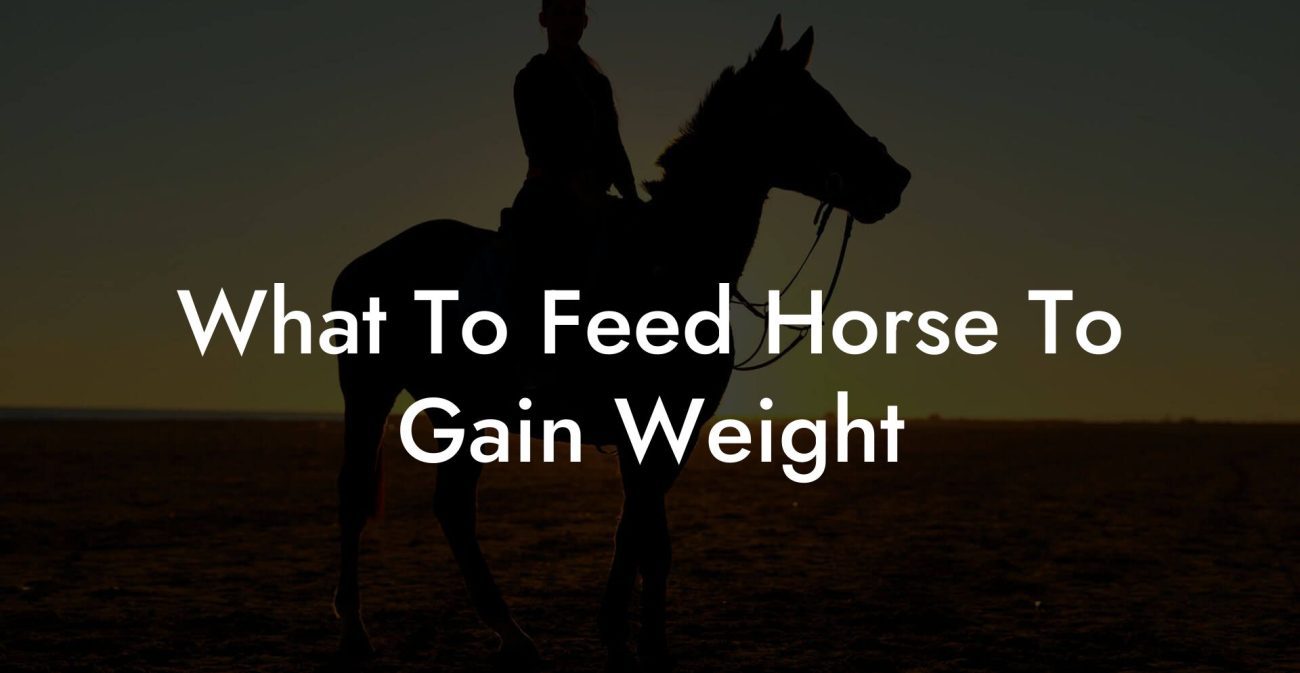Every horse owner knows the struggle: balancing the right amount of dry feed to keep your majestic companion galloping with gusto without turning their belly into a padded pantry. Whether you're a first-timer scrolling through Instagram horse memes or an experienced equine enthusiast, understanding just how much dry feed per day your horse needs is as much an art as it is a science. Let’s break it down in a way that’s practical, playful, and packed with the equine wisdom you crave.
Quick Links to Useful Sections
- Understanding Dry Horse Feed: More Than Just Crunchy Grains
- Key Factors Affecting Your Horse’s Dry Feed Requirements
- Calculating the Right Amount: How to Determine Dry Feed Per Day
- Step-by-Step Calculation
- Types of Dry Feed: Exploring Your Options
- Pelleted Feed
- Cruelty-Free Crumbles
- High-Energy Concentrates
- Specialized Formula Feeds
- Mixing It Up: Balancing Dry Feed with Forage and Supplements
- Feeding Schedules: Timing is Everything for Equine Nutrition
- Monitoring Your Horse’s Health and Adjusting Feed Amounts
- Common Misconceptions About Dry Horse Feed
- Myth 1: More is Always Better
- Myth 2: One Brand Fits All
- Myth 3: Dry Feed Can Replace Forage
- Myth 4: High-Quality Feed Is Always Expensive
- Resources and Community Support: Your Next Steps
- Tailoring Your Equine Nutrition Strategy: Combining Science with a Dash of Fun
- Expert Tips and Creative Strategies for a Happy, Healthy Horse
- Dry Horse Feed and the Digital Age: Staying Informed and Empowered
- Frequently Asked Questions About Dry Horse Feed
- Your Path to Equine Nutrition Mastery
Understanding Dry Horse Feed: More Than Just Crunchy Grains
Dry horse feed refers to a range of processed feeds, from pellets and crumbles to textured concentrates, that are formulated to supply your horse with essential nutrients when pasture or hay alone doesn’t cut it. Unlike wet feed or liquid supplements, dry feed has a long shelf life, simplifies storage, and can be tailored to specific dietary needs. From high-energy grains to balanced mixes enriched with vitamins and minerals, dry feed plays a crucial role in ensuring your equine friend stays healthy, strong, and ready to trot in style.
Think of dry feed as your horse’s power snack, it may look like a humble crunch, but it’s packed with the nutrients necessary for muscle repair, energy production, and overall health. Whether your horse is a full-blown competitor, a laid-back pasture pal, or a charming part-timer, understanding the role of dry feed in its diet is a cornerstone of smart, modern equine care.
In the world of horse nutrition, dry feed is the unsung hero, bridging the gap between nutrient-dense forages and the high-demand energy requirements of our four-legged friends. It’s not just about quantity, it’s about quality, balance, and knowing how to integrate it effectively into your horse’s daily regimen.
Key Factors Affecting Your Horse’s Dry Feed Requirements
When determining the optimal dry feed per day for your horse, several factors come into play. While it might be tempting to follow a one-size-fits-all rule, every horse is as unique as its rider’s sneaker collection. Here are the main factors to consider:
- Body Weight and Body Condition: Like us, horses come in different sizes. A heavier or under-conditioned horse may require more dry feed to maintain muscle mass and energy levels.
- Age: Growing foals and mature horses have very different nutritional needs. Foals often require higher energy levels, while older horses might need a diet that’s easier on their digestion.
- Activity Level: A show jumper’s energy expenditure vastly exceeds that of a leisurely trail horse. Adjust your feed accordingly to provide enough fuel for performance or leisurely days.
- Metabolism: Just like humans, horses have varying metabolisms. Some burn energy quickly and need extra calories in the form of dry feed, while others might need a more moderate approach.
- Environmental Conditions: Winter chills or summer heat can impact a horse’s energy consumption. Temperature extremes might require dietary adjustments to maintain body heat or avoid overheating.
- Health and Digestive Efficiency: Horses with digestive issues, dental problems, or metabolic disorders might need specially formulated dry feed to ensure proper nutrient absorption without upsetting their sensitive stomachs.
Balancing these factors is much like assembling your favorite playlist, you have to mix the right tunes (or nutrients) to hit the perfect daily rhythm. In essence, understanding these variables ensures that every mouthful of dry feed contributes to a balanced and vibrant equine diet.
Calculating the Right Amount: How to Determine Dry Feed Per Day
Figuring out how much dry feed to serve your horse daily isn’t just a matter of throwing a handful of grains into the feed bucket and hoping for the best. It’s a careful calculation that involves a mix of science, observation, and occasionally, a bit of gut instinct (both yours and your horse’s).
A common rule of thumb in the equine community is to provide dry feed that makes up about 1-2% of the horse’s body weight per day. For a 1,000-pound horse, that’s roughly 10 to 20 pounds of total feed. But wait, this isn’t a free-for-all feast plan solely based on weight!
Step-by-Step Calculation
1. Consider the Horse’s Weight: Start by knowing your horse’s current weight. A scale at a feed store or using a weight tape can be a game-changer here.
2. Establish the Percentage: Depending on your horse’s activity level, age, and overall condition, decide on whether 1%, 1.5%, or 2% of its body weight is ideal.
3. Calculate the Daily Ration: Multiply your horse’s weight by the chosen percentage. For example, a 1,000-pound horse at 1.5% should get about 15 pounds of feed per day.
4. Adjust for Forage: If your horse is grazing on rich pasture or is receiving a high volume of hay, you may need to reduce the amount of dry feed accordingly.
5. Monitor and Tweak: Observe your horse’s body condition, performance, and energy levels. If your horse seems too thin, lean towards upping the ration slightly; if it’s gaining excess weight, consider scaling back.
These calculations are the cornerstone of responsible horse care, ensuring that your companion receives the right balance of calories for its lifestyle, all while keeping those energy levels on point whether they’re trotting in the pasture or posing for epic Insta shots.
Types of Dry Feed: Exploring Your Options
The market is bursting with options when it comes to dry feed, and choosing the right one can be as daunting as picking the perfect filter for your latest social media post. Here, we break down the most common types of dry feed available for horses, along with what makes them stand out.
Pelleted Feed
Pelleted feed is the equivalent of a well-blended smoothie in horse nutrition. These compact, uniform pellets are designed to prevent sorting (so your horse gets a balanced diet with every bite) and often mix both grains and proteins with vitamins and minerals. Their consistent composition makes them ideal for horses with sensitive digestive systems.
Cruelty-Free Crumbles
Crumbles offer a slightly different texture that some horses prefer over pellets. Typically derived from grain and fiber sources, these feeds are engineered for balance, digestibility, and sometimes even a bit of that irresistible crunch factor. They’re particularly popular among owners who want their horses to enjoy meal times as much as they enjoy a good Instagram story.
High-Energy Concentrates
For those horses that compete in high-intensity activities or are in heavy work, high-energy concentrates provide that extra kick of nutrition. These feeds are loaded with calories, ensuring that your powerhouse horse has the energy reserves to jump, trot, and race without faltering. However, be cautious, too many calories without the proper amount of exercise can lead to weight gain.
Specialized Formula Feeds
Some horses come with unique nutritional needs, whether due to age, vision, dental conditions, or specific health issues. Manufacturers have responded with specialized formulas that address everything from senior horse dietary requirements to feeds enriched for improved coat shine and joint health. These dry feeds often include supplements like omega-3 fatty acids, antioxidants, and additional fiber, ensuring that nutrition is as tailored as your favorite artisanal coffee blend.
By understanding these different options, you can choose a dry feed that not only meets your horse’s caloric needs but also fits its palate. After all, even horses deserve a bit of gourmet dining now and then!
Mixing It Up: Balancing Dry Feed with Forage and Supplements
While dry feed is an essential component of your horse’s diet, it shouldn’t be the only course served. The true secret to a happy, healthy horse lies in balance, integrating dry feed with ample forage, fresh water, and the occasional supplement is key.
Forage First: Horses are natural grazers. Whether it’s lush pasture, high-quality hay, or a mix of both, forage should form the bulk of your horse’s daily intake. Forage not only aids in digestion but also satisfies the natural foraging instincts that keep your horse mentally engaged and physically active.
Complementary Supplements: Depending on your horse’s specific needs, like joint support, coat health, or digestive ease, integrating targeted supplements can enhance the benefits of dry feed. These might include:
- Electrolytes to replace vital minerals lost during heavy work or in hot weather.
- Probiotics to maintain a healthy gut flora for optimal digestion.
- Vitamins and minerals that could fill any nutritional gaps.
Custom Feeding Plans: Remember, no two horses are exactly alike. The amount of forage available, the type of dry feed you choose, and your horse’s unique metabolism call for a feeding plan that’s as individualized as your favorite playlist. Experiment by gradually adjusting ratios, tracking weight and energy levels, and refining the balance until you hit that sweet spot.
The goal is to ensure that all components of the diet, dry feed, forage, water, and supplements, work in harmony, much like a perfectly choreographed dance routine. This balanced approach not only helps regulate digestion and weight but also makes meal times exciting and enjoyable for your horse, keeping its tail high and spirit even higher.
Feeding Schedules: Timing is Everything for Equine Nutrition
Beyond knowing what to feed your horse, the timing of meals can play a significant role in its overall well-being. Horses, by nature, are trickle feeders. Their digestive systems thrive on regular, steady meals rather than one or two giant feeding sessions.
Establishing a Routine: Aim to divide your horse’s daily dry feed allotment into several smaller meals spread across the day. This gradual intake mirrors natural grazing behavior, supports steady energy levels, and may reduce the likelihood of digestive disturbances such as colic.
Morning, Midday, and Afternoon Feedings: An efficient approach might be to serve a modest portion with the morning turnout, another split mid-afternoon, and the final portion in the early evening before stabling. This rhythm not only fuels sustained energy for work or play but also aids in regulating blood sugar levels, which can be particularly important for horses with metabolic sensitivities.
Adapting to Your Horse’s Schedule: Consider your horse’s daily routine, if it’s active in the early morning or mid-afternoon, slightly adjust the portions to ensure it has the needed energy bursts at the right time. Just as you wouldn’t skip breakfast before school or a big meeting, your horse needs a steady flow of nutrients to perform at its best.
Ultimately, a well-planned feeding schedule is about synchronizing nutritional intake with activity patterns. This careful timing ensures that every morsel of dry feed is efficiently utilized, resulting in a healthier, happier horse.
Monitoring Your Horse’s Health and Adjusting Feed Amounts
Keeping a close eye on your horse’s condition is as essential as selecting the perfect dry feed blend. Over time, meticulous observation can reveal subtle changes in weight, coat condition, energy levels, and overall performance that might signal the need for dietary adjustments.
Regular Weigh-Ins: Use a weight tape or schedule periodic weigh-ins at your local feed store to ensure your horse is maintaining an optimal body condition. In this way, a slight adjustment in the daily dry feed can prevent unwanted weight fluctuations.
Body Condition Scoring: Familiarize yourself with the body condition scoring system, a quick visual and tactile check that helps determine if your horse needs more or less feed. Look for signs such as a prominent ribcage, tucked abdomen, or overly visible bones as cues for adjustments.
Observing Eating Habits: Your horse’s behavior around meal times is a clue in itself. Is it finishing every mouthful in record time, or does it leave a trail of feed behind? Such patterns can indicate whether the horse finds the feed palatable or if its caloric needs are being met.
Consulting with Professionals: Don’t underestimate the value of having a conversation with your veterinarian or an equine nutrition expert. They can help interpret changes in your horse’s health and provide recommendations on whether to adjust the dry feed amount, switch formulas, or supplement with additional nutrients.
In essence, monitoring isn’t a one-time chore, it’s an ongoing dialogue between you and your horse’s body. This feedback loop ensures that every adjustment made to the dry feed per day is responsive, timely, and geared toward maintaining the horse’s peak condition.
Common Misconceptions About Dry Horse Feed
There are plenty of myths swirling around when it comes to dry feed for horses. Let’s bust a few of these misconceptions wide open:
Myth 1: More is Always Better
Some new horse owners believe that a bigger feed bucket means a healthier horse. However, overfeeding can lead to obesity, metabolic issues, and digestive disturbances. The key is balance, ensuring your horse’s feed matches its caloric needs.
Myth 2: One Brand Fits All
Every horse is unique, which means the “one-size-fits-all” mentality falls short. What works for your neighbor’s thoroughbred might not suit your retired trail companion. Experimenting with different blends under professional guidance can help you find the perfect match.
Myth 3: Dry Feed Can Replace Forage
While dry feed is a crucial part of the diet, it cannot, and should not, replace forage completely. Horses are designed to graze; forage provides necessary fiber and promotes healthy digestion. Dry feed should complement, not dominate, the diet.
Myth 4: High-Quality Feed Is Always Expensive
Although some premium feeds come with a higher price tag, there are plenty of cost-effective options that meet nutritional needs. Prices often reflect additional supplements or enhanced formulations, but many mid-range products provide excellent nutrition for everyday health.
Dispelling these misconceptions is essential for constructing a feeding program that truly supports your horse’s overall well-being. Through careful research, consultation, and regular monitoring, you can navigate the landscape of dry horse feed with confidence and clarity.
Resources and Community Support: Your Next Steps
Ready to level up your horse care game? The equine community is brimming with knowledgeable experts, online forums, local feed stores, and even farm shows where you can gain insights on the best dry feed practices. Whether you’re hunting for tailored dietary advice, the latest feed reviews, or simply want to connect with fellow horse lovers who share your passion, there’s a whole world of support at your fingertips.
Check out reputable online resources like the American Association of Equine Practitioners, trusted equine nutrition blogs, and communities on social media where experts swap advice, share success stories, and even post hilarious horse memes. Engaging with these communities can enrich your understanding of feeding strategies, updates on new products, and transformative stories from riders who fine-tuned their horse’s diet and witnessed amazing results.
Whether you’re aiming to revamp your current feeding regimen or simply curious about exploring the latest trends in equine nutrition, taking action and connecting with the community is your next big step. It’s not just about feeding your horse, it's about joining a thriving community that cares, supports, and celebrates every hoofbeat along the journey of optimal equine care.
Tailoring Your Equine Nutrition Strategy: Combining Science with a Dash of Fun
Crafting a successful feeding strategy for your horse calls for more than merely following numbers and formulas, it’s about blending robust scientific principles with the playful, ever-evolving spirit of equine care. Embrace experimenting with small changes to your horse’s dry feed ratio, be it introducing new feed textures, adjusting meal timings, or integrating a creative mix of nutrient-packed forage.
Consider keeping a daily journal (or a trendy digital log) to track your horse’s eating habits, weight, and overall happiness. Share your experiences on forums or social channels to exchange ideas with other horse enthusiasts. In this way, each adjustment becomes a fun experiment that could reveal the secret formula behind your horse’s enviable energy and glossy coat.
Ultimately, your strategy is a living plan that evolves with your horse’s needs, the changing seasons, and the latest breakthroughs in equine nutrition. Stay curious, keep learning, and never lose sight of the joy in this journey, a journey where science meets heart, and every meal is a step toward a longer, healthier trot through the fields of life.
Expert Tips and Creative Strategies for a Happy, Healthy Horse
Aside from the basics, here are a few creative strategies to further ensure that your horse is thriving:
- Rotate Feed Types: Occasionally swapping different dry feed formulas can help prevent nutrient monotony and stimulate your horse’s appetite.
- Interactive Feeding: Consider using slow feeders or treat balls that encourage your horse to work a bit for its food, this not only entertains but also promotes mental stimulation.
- Seasonal Adjustments: As the weather changes, modify not just the quantity but also the composition of the feed. Summer months may require more hydration and a slight reduction in calories, while winter might call for more energy-dense feed to help maintain body warmth.
- Social Feeding: Feeding in a group setting can simulate natural grazing behavior and reduce stress. Just be mindful of competition to ensure every horse gets its fair share.
- Regular Vet Consultations: Regular check-ups can help you spot any dietary issues before they become major problems. More importantly, they keep you updated on the latest nutritional advice tailored to your horse’s needs.
These expert tips are designed to inject a bit of creativity and practical know-how into your daily routine. After all, keeping horses happy and healthy is an art that continuously evolves with new trends, scientific research, and the everyday wisdom shared among passionate horse lovers.
Dry Horse Feed and the Digital Age: Staying Informed and Empowered
In today’s fast-paced digital era, where information is just a swipe away, staying informed about equine nutrition has never been easier. Follow equine nutrition podcasts, join webinars, or subscribe to newsletters from leading experts. Digital platforms offer a treasure trove of content, from detailed feeding plans to innovative techniques that blend traditional wisdom with modern technology.
Platforms like YouTube host tutorials by expert equine nutritionists, while Instagram and TikTok feature bite-sized tips that can simplify even the most complex feeding strategies. Engaging with these platforms not only keeps you updated on the latest trends but also connects you with a dynamic community that celebrates the fusion of knowledge and creativity in horse care.
As you navigate through this digital landscape, remember that the best strategies often come from combining online insights with your own hands-on experience. It’s this mix of tech-savvy information and real-world application that truly empowers you to make informed decisions about how much dry feed per day is right for your horse.
Frequently Asked Questions About Dry Horse Feed
Here’s a roundup of some burning questions that both new and seasoned horse owners often have regarding dry feed amounts and equine nutrition:
1. How do I determine the right amount of dry feed for my horse?
The dry feed amount is typically calculated as a percentage of your horse’s body weight, usually 1-2% depending on activity levels, age, and overall condition. Always consider your horse’s forage intake when planning the feed ratio.
2. Can dry feed replace hay or pasture completely?
No, forage should always be the cornerstone of your horse’s diet. Dry feed is meant to complement, not substitute, the fiber and nutrients found in hay or pasture.
3. Are there specific dry feed formulas for different types of horses?
Yes, many manufacturers offer specialized dry feed formulas tailored for performance horses, senior horses, or those with sensitive digestive systems. It’s important to choose one that fits your horse’s specific needs.
4. How often should I adjust my horse’s feed?
Regular monitoring of your horse’s body condition, energy levels, and overall health will indicate when adjustments are needed. Seasonal changes, exercise routines, and age-related factors all play a role.
5. Is it okay to mix dry feed with other supplements?
Absolutely, as long as you consult with a veterinarian or equine nutrition expert to ensure the combined diet meets your horse’s needs without causing imbalances.
6. What are the signs that my horse might need more or less dry feed?
Changes in weight, coat condition, energy levels, and overall body condition are good indicators. If your horse is losing weight or appears lethargic, it might need more calories; conversely, if it’s gaining excess weight, consider reducing the portion.
7. Can I use dry feed as a quick energy boost before competition?
While dry feed is a good source of energy, it’s best to plan your horse’s meals well ahead of competitions. A sudden spike in dry feed without proper digestion can lead to discomfort or digestive issues.
8. How do weather conditions affect feeding needs?
In colder weather, horses may require more energy-dense diets to maintain body warmth, while during hot weather, hydration and lighter meals might be preferred.
9. What role does metabolism play in determining feed amounts?
Just like humans, some horses have faster metabolisms and burn energy more quickly, necessitating a larger feed portion, while others may require less. Regular health assessments can help tailor your approach.
10. Where can I find more reliable information on equine nutrition?
Reputable sources include veterinary networks, equine nutrition websites, and communities like those on social media platforms dedicated to horse care. Always look for advice from certified professionals.
Your Path to Equine Nutrition Mastery
In the quest for equine excellence, every detail counts, from the crunch of each dry feed pellet to the rhythm of your horse’s gallop across the pasture. Understanding the ins and outs of how much dry feed per day is needed isn’t just a technicality; it’s the cornerstone of a thriving, healthy, and joyful horse.
By weaving together scientific principles, hands-on observation, and a genuine love for your equine friend, you’re not just feeding a horse, you’re investing in its long-term vitality, performance, and happiness. Every thoughtful decision, every adjustment to the feed ration, and every consultation with trusted experts adds up to a healthier, more dynamic partner in your equine adventures.
Embrace this journey with the confidence of knowing that you’re not alone; a vibrant community of equine enthusiasts, nutrition experts, and seasoned caretakers are all galloping alongside you in the quest for optimum horse care. So grab your feed scoop, set your schedule, and dive into the world of dry feed with style, humor, and an unwavering commitment to excellence.
After all, a well-fed horse is a happy horse, and a happy horse makes every ride, every show, and every Instagram post all the more epic.













